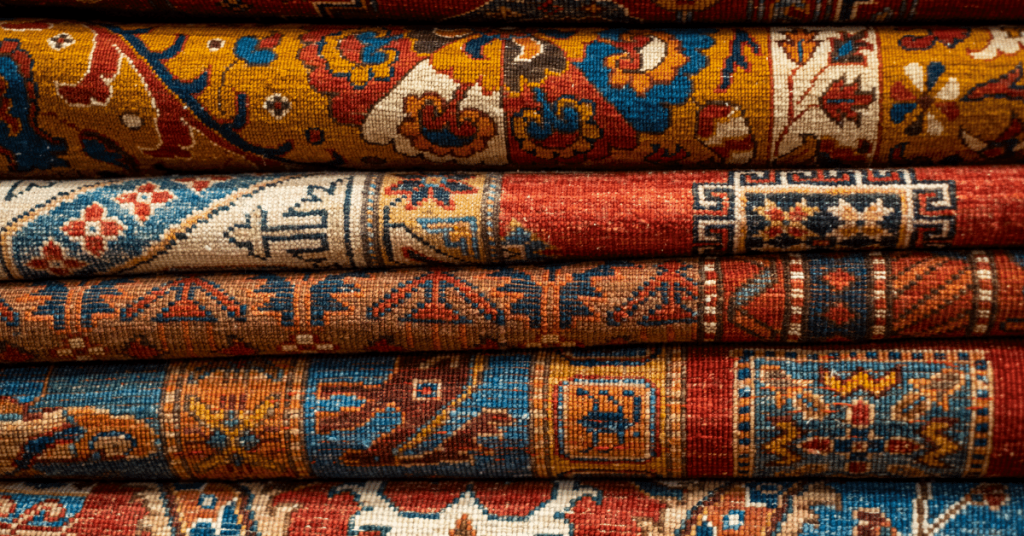As a new parent, you are probably wondering whether or not you polyester rugs are safe for babies. Maybe you’ve spotted a polyester rug that seems perfect for your baby’s room. However, is it really safe to use these rugs with baies?
No, polyester rugs aren’t safe for babies because in some cases they can emit dangerous gases called volatile organic compounds. It’s wiser to keep products made from polyester away from the babies.
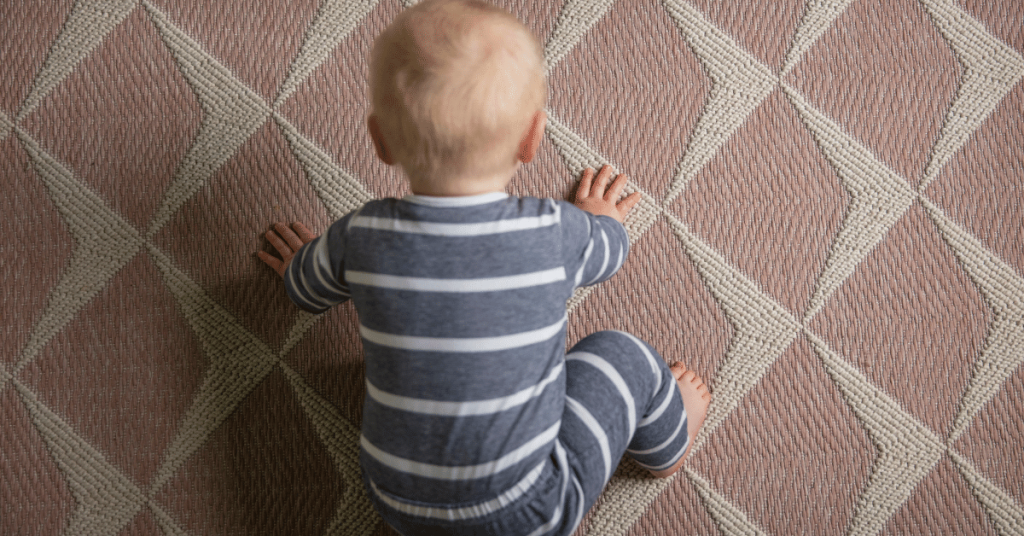
Keep reading to find more! Learning more about the nature of polyester carpets will help you evaluate their place in your home.
And if you’re interested in knowing about different types of rugs, I would strongly recommend that you read our guide on the different types of rugs. That way you’ll which one is best for the new member of the family.
Types of Rugs. Everything You Need to Know!
There are many types of rugs. And you need to know which is which before you buy. Read this to know everything there is to know about all types of rugs!
Everything about Polyester Rugs
Polyesters are defined as synthetic fibers created by a chemical reaction that occurs between air, coal, petroleum, and water. In other words, it is a human-made artificial material that is created by chemists. Initially created in the 1940s, the popularity of polyesters has since skyrocketed because it is so inexpensive.

Polyester fibers are used to manufacture a wide array of products spanning between categories like clothing, insulation, and decor. Most of the carpets available in the market today are made of synthetic materials. Since polyester is artificial, first-time parents may be fearful about the presence of this fabric in the home.
Let’s look into the properties of polyester, as it will help concerned parents make better decisions for their household.
Properties
Polyester is not naturally found in the ecosystem, which means it has to be created in controlled conditions. Understanding the behavior of this material will help you make the perfect decision for your home.
When it comes to tensile strength, polyester is a king. If you’re worried about wrinkle resistance, there is no doubt that this artificial fiber will perform. Ever wondered if it is resistant to chemicals? You will undoubtedly be pleased to know that it can survive harshness easily.
New parents may be concerned about the capability of polyester to resist stains. After all, with a kid in the home, spills are likely to occur. Fortunately, these human-made fibers have a low absorbency level, which hinders water-borne stains. If you have a polyester rug, you don’t have to stress about stains.
Did you know that polyester is so stubborn that only special dispersed dyes are used to color them?
As a parent, you wish to make the right decisions for your loved ones. Understanding how polyester rugs interact with water may prove useful.
The synthetic polyester material is hydrophobic, which means that it repels water. With low levels of wicking, polyester fabrics manage to feel a little moist when touched in a humid atmosphere. However, they tend to dry quickly and can easily be washed if ever needed.
Lifespan
Just because polyester is extensively used in various products, that doesn’t mean it lasts long. On average, polyester carpets exposed to a high footfall will last for about five years. On the other hand, carpets made with natural fibers have a longer lifespan of about ten to fifteen years. Polyester rugs have a relatively shorter lifespan when compared to wool or cotton ones.
The popularity of polyester carpets has not been so consistent over time. However, it may be suitable for you if you want a specific hue or shade for your carpet. After all, the unique formulation of synthetic polyester resins allows owners to get one in vibrant colors. That said, if you’re looking for longevity, polyester is not the right pick for you.
Some marketers will try to fool you into buying a rug with a polyester-nylon blend. Don’t buy into their claims that a blended rug has an increased lifespan.
Maintenance
Proper maintenance of indoor items like carpets is, without a doubt, essential. Whatever you do, don’t place something heavy over it. Despite how well you care for the polyester rug in your home, once it is crushed, there is no going back.
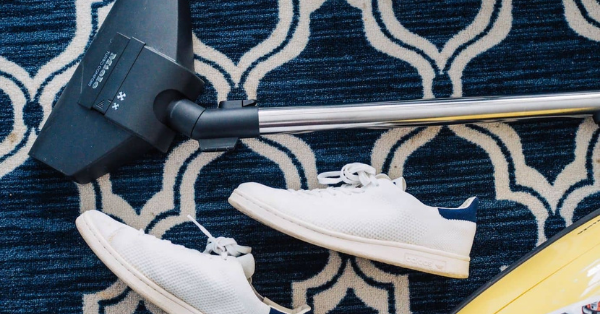
One downside of a polyester rug is the fact that you can do about nothing if its shape deteriorates. Be mindful of where you place it because furniture compression can permanently cause an indent on your precious floor covering. Even though it is quite a durable material, it isn’t resilient and won’t be able to hold up against the pressure.
PRO TIP
ELIMINATE OIL STAINS BEFORE WASHING
Before you thoroughly wash your polyester rug, make sure you get rid of any oil stains. Make it a point to comply with the given care procedure of the product.
Since polyester is highly stain-resistant, you can sustain a rug’s cleanliness with regular vacuuming easily. However, if you oddly find an obnoxious spot on the polyester rug, only rely on professional cleaning agents for help.
Health Considerations
Parents prioritize their child’s health and consider it foremost when making any decisions for the household. Polyester is a synthetic human-made fiber that can be found in a plethora of luscious colors. Therefore, rugs made out of this synthetic material may appear extremely appealing to the visual senses. But the real question is whether it has a negative impact on health?
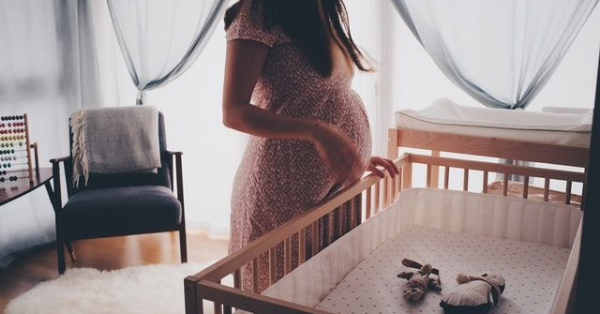
Synthetic materials like polyester emit ‘volatile organic chemicals’, which pose a health threat to humans. How then would it be practical to keep a polyester rug in a baby’s room? Depending on the wear and tear of a product, the fibers may deteriorate, thereby initiating the release of toxic substances.
If you’re like any other parent, this may be reason enough for you to choose another material for your carpet.
Environmental Conditions
Polyester is producing significant amounts of greenhouse gases and is hence not a sustainable material to choose for your carpet. Moreover, it is a petroleum-based product, which is not biodegradable. In short, this man-made concoction violates both health and environmental considerations.
From an ethical point-of-view, keeping polyester rugs is not an appropriate choice as naturally sourced floor coverings are readily available. Environmentally-conscious individuals may want to steer away from polyester carpets for their homes. This may set a good precedent for descendants and may help formulate their values when they grow up.
What Alternatives Do You Have?
You’re a conscious parent, and you’ve understood how polyester won’t just do for your home. Here are some alternative materials you can consider for your carpets.
1. Wool
Wool carpets hold a precious spot in the eyes of the public. However, they are even dearer to new parents because of how safe they are.
Wool is a hypoallergenic material that is both alluring and practical for use at home. Its unique fiber structure effectively hampers the growth of bacteria and dust mites. Babies are still developing their immune system, and therefore, they require a safe environment at home. New parents should consider investing in a wool carpet as it will have a meaningful impact on the household.
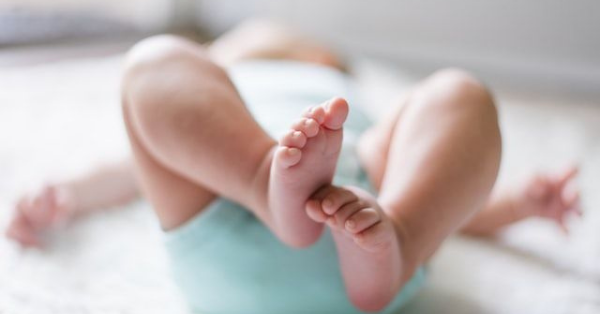
Whether you measure wool rugs on ethical or environmental standards, it will remain a better option than polyester. You can create a positive precedent for your offspring by surrounding them with safe and eco-friendly products. The benefits of wool carpets include being more durable and aesthetically pleasing.
2. Cotton
Cotton is another allergen-friendly material, which is ideal for your baby’s wellbeing. Can’t you just imagine your little angel crawling on a cozy and plump cotton carpet?
The material is sourced naturally through the harvest of fiber balls from cotton crops. After further processing and manufacturing, the final fibers that end up in the carpet are incredibly soft and fluffy.
The only significant disadvantage attached to cotton rugs is how quickly they deteriorate. However, that might not seem too bad as they are quite affordable also? If it doesn’t take a toll on your wallet, the shorter lifespan of cotton shouldn’t feel too cumbersome.
Do be mindful of the fact that cotton is washable, and is hence very easy to maintain. If you ever think your carpet is too dirty, you can clean it without hesitation. Since children like to make a mess, many first-time parents choose cotton as their preferred material for carpets.
Conclusion
If you’re a first-time parent, I’m sure you want to make your house more beautiful and safer for your baby. Every single detail matters, whether is getting child-friendly furniture or placing appealing decor indoors.
Most carpets available in the market today are made of polyester molecules, which are basically petroleum-based synthetic fibers. Since this material is known to release volatile organic chemicals, it may not be suitable for a baby’s environment.
If you’re looking for a place to buy a new rug for your baby, you can’t leave without visiting our buy a rug online guide. You’ll find amazing rug shops you didn’t know about there!

